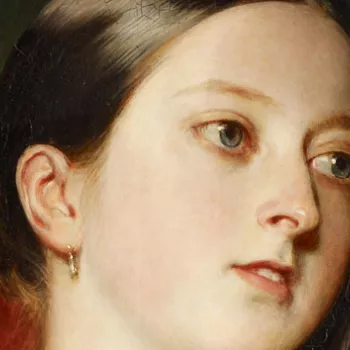Friedrich Ruckert c. 1835 - 1856
Marble | 68.0 x 38.0 x 28.0 cm (whole object) | RCIN 69005
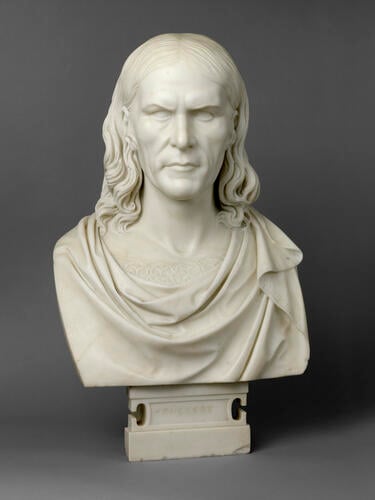
Carl Johann Steinhäuser (1813-79)
69005 Front.tif c. 1835 - 1856
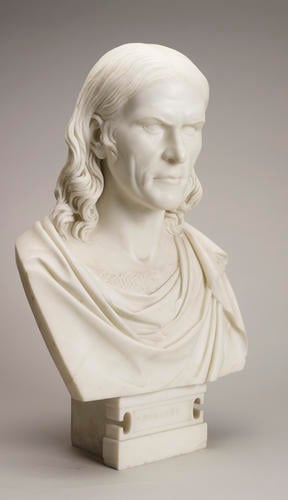
Carl Johann Steinhäuser (1813-79)
69005 looking to left.tif c. 1835 - 1856
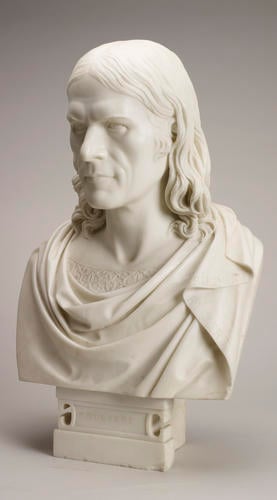
Carl Johann Steinhäuser (1813-79)
69005 looking to right.tif c. 1835 - 1856
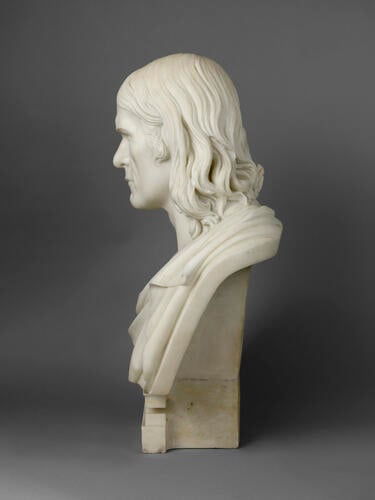
Carl Johann Steinhäuser (1813-79)
69005 Side 2.tif c. 1835 - 1856

Carl Johann Steinhäuser (1813-79)
69005 Side 1.tif c. 1835 - 1856
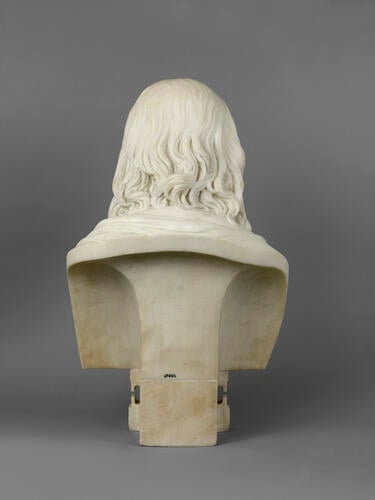
Carl Johann Steinhäuser (1813-79)
69005 Back.tif c. 1835 - 1856
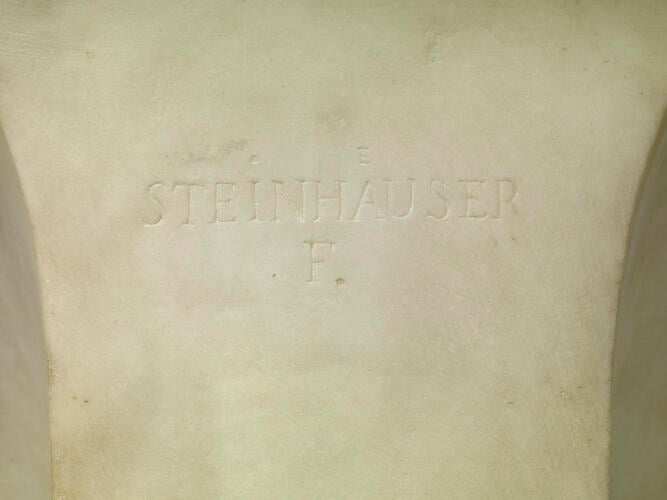
Carl Johann Steinhäuser (1813-79)
69005 Detail.tif c. 1835 - 1856







-
A white marble life size bust of Friedrich Rückert, head half turned to right, staring intently; shoulder length wavy hair. Dressed in medieval manner with embroidered shirt and folded cloak. On square socle.
On 20 October 1839, while he was staying at Windsor Castle having just accepted the Queen's proposal for marriage, Prince Albert wrote to his fiancee: 'I have just read Fr Rückert's poems, and came upon a little sonnet which moved me deeply. I send it: perhaps it will please you'.
Friedrich Rückert (1788-1866) was in all but name the court poet of Coburg, and the Princes Ernest and Albert were no doubt very familiar with his work, which includes a poem ostensibly addressed to them by the youth of Coburg (1826), and an ode in celebration of Prince Albert's marriage (1840). Rückert was a native of Schweinfurt in Lower Franconia. He moved in 1820 to Coburg, not far away to the north, where he lived in an old house very near the ducal palace, the Ehrenburg. He moved again in 1826 to become Professor of Oriental Language at the University of Erlangen, and later to Berlin, but he continued to own property in the Coburg district, spending his last years in the nearby village of Neuses.
In his lifetime Rückert composed around twelve thousand poems, the majority concerned with aspects of love and/or loss. His verses proved especially adaptable to music, and were set by numerous composers including Schumann, Schubert (notably Du bist die Ruh) and Mahler, whose Kindertotenlieder set five poems inspired by the death of two of the poet's children in the 1830s. Two settings of Rückert, Trauerlied and Der Ungeliebte, are among the published songs composed by Prince Albert himself.
The sculptor Carl Steinhäuser learnt the art of portraiture in Berlin from his master, C.D. Rauch. This was one of his first independent works, although he later judged it strongly influenced by Rauch. It was modelled at Erlangen in August 1835 during Steinhäuser's brief holiday from his studies in ancient sculpture in Rome, where he had been sent on a scholarship. The sculptor was also about to be married, and the bust was modelled initially for his future wife, a devotee of Rückert's work. Steinhäuser was struck with admiration for the poet's expressive head, later recalling: '...I believed I had before me the apparation of a Nibelung'. He was charmed by Rückert's wisdom and returned to Rome with the poet's greetings to the older generation of German expatriate artists, and a lock of his famous long hair for his wife. While following the basic pattern of ancient Greek busts of poets or philosophers, Steinhäuser portrays Rückert in historical costume, placing him in the medieval tradition of the 'Minne' or troubadour.
It is not certain when this bust - the only known marble version - was made. By 1856, when it was acquired by Prince Albert, the royal couple had long been aware of Steinhauser's work, having in 1841 acquired a marble statue of a Siren as a companion to a Sea Nymph by Wolff for the Picture Gallery at Buckingham Palace. Rückert's bust was paired with another work by Wolff - his portrait of the historian of ancient Rome, Barthold Georg Niebuhr (RCIN 31168) - in the Corridor outside the Prince's Library and Music Room in the Palace. It maybe no coincidence that around the same time as he acquired the bust, the Prince sent Rückert a case of 'valuale oriental books'.
Text from Victoria & Albert: Art & Love (Cat 95, page 164)Provenance
Purchased by Prince Albert in September 1856.
-
Creator(s)
(nationality)Acquirer(s)
-
Medium and techniques
Marble
Measurements
68.0 x 38.0 x 28.0 cm (whole object)
Category
Object type(s)




